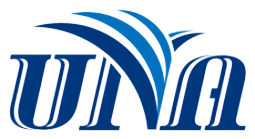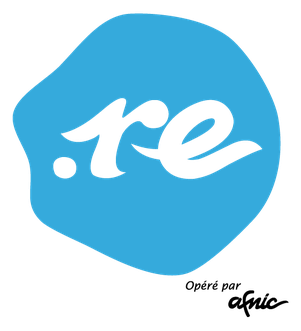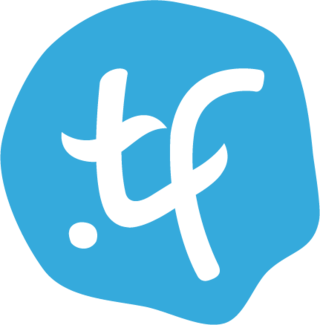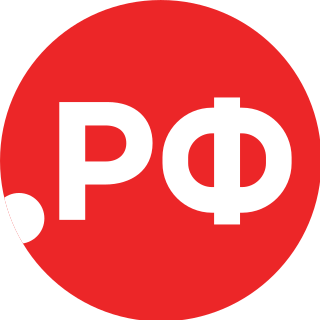A top-level domain (TLD) is one of the domains at the highest level in the hierarchical Domain Name System of the Internet after the root domain. The top-level domain names are installed in the root zone of the name space. For all domains in lower levels, it is the last part of the domain name, that is, the last non empty label of a fully qualified domain name. For example, in the domain name www.example.com, the top-level domain is .com. Responsibility for management of most top-level domains is delegated to specific organizations by the ICANN, an Internet multi-stakeholder community, which operates the Internet Assigned Numbers Authority (IANA), and is in charge of maintaining the DNS root zone.

.us is the Internet country code top-level domain (ccTLD) for the United States. It was established in early 1985. Registrants of .us domains must be U.S. citizens, residents, or organizations – or foreign entities with a presence in the United States or any territory of the United States. Most registrants in the U.S. have registered for .com, .net, .org and other gTLDs, instead of .us, which has primarily been used by state and local governments, even though private entities may also register .us domains.

.uk is the Internet country code top-level domain (ccTLD) for the United Kingdom. It was first registered in July 1985, seven months after the original generic top-level domains such as .com and the first country code after .us.

.de is the country code top-level domain (ccTLD) for the Federal Republic of Germany. DENIC does not require specific second-level domains, and there are no official ccSLDs under .de ccTLD, as it is the case with the .uk domain range which until 2014 required .co.uk domain for example.

.ie is the country code top-level domain (ccTLD) which corresponds with the ISO 3166-1 alpha-2 code for Ireland. The Internet Assigned Numbers Authority (IANA) list the Computing Services Computer Centre of University College Dublin as its sponsoring organisation for the .ie domain. Since 2000 the business of administrating the domain registry has been handled by IE Domain Registry Limited. Domain name registration is open to individuals located in, or with a significant connection with, any part of the island of Ireland.
A country code top-level domain (ccTLD) is an Internet top-level domain generally used or reserved for a country, sovereign state, or dependent territory identified with a country code. All ASCII ccTLD identifiers are two letters long, and all two-letter top-level domains are ccTLDs.

.an was the Internet country code top-level domain (ccTLD) for the former Netherlands Antilles. It was administered by the University of the Netherlands Antilles. The domain was phased out after the Netherlands Antilles were dissolved in 2010. As of November 2010 the .an domain remained live with over 800 domains registered under .an, including secondary levels. On 31 July 2015, use of the domain was discontinued.
The Canadian Internet Registration Authority (CIRA) is the organization that manages the .ca country code top-level domain (ccTLD) for Canada. Its offices are located at 979 Bank Street in Ottawa, Ontario, Canada. CIRA sets the policies and agendas that support Canada's Internet community and Canada's involvement in international Internet governance. It is a member-driven organization with membership open to all that hold a .ca domain. As of January 2021, there were more than 3 million active .ca domains.

.fr is the Internet country code top-level domain (ccTLD) in the Domain Name System of the Internet for France. It is administered by AFNIC. The domain includes all individuals and organizations registered at the Association française pour le nommage Internet en coopération (AFNIC).
.qa is the Internet country code top-level domain (ccTLD) for Qatar.

.re is the Internet country code top-level domain (ccTLD) for Réunion. Along with .fr, .tf, and .ovh, it is administered by AFNIC.

.tf is the Internet country code top-level domain (ccTLD) for the French Southern and Antarctic Lands. Along with .fr, .pm, .re, .wf and .yt it is administered by AFNIC. Before 23 October 2004, Adamsnames, based in Cambridge in the United Kingdom, administered this TLD.

.ge is the country code top-level domain (ccTLD) for Georgia. .ge top-level domain names are available for direct registration for individuals and companies worldwide, without any restriction on citizenship or residence. Second-level domain names are also available for registration for several specific types of registrants:
.pf is the Internet country code top-level domain (ccTLD) for French Polynesia. The name pf derived from the French name of Polynésie française.

.pm is the country code top-level domain (ccTLD) for Saint Pierre and Miquelon. It is managed by AFNIC, with registration services opening on 6 December 2011.
In the Domain Name System (DNS) hierarchy, a second-level domain is a domain that is directly below a top-level domain (TLD). For example, in example.com, example is the second-level domain of the .com TLD.
A domain hack is a domain name that suggests a word, phrase, or name when concatenating two or more adjacent levels of that domain. For example, "bir.ds" and "examp.le", using the fictitious country-code domains .ds and .le, suggest the words birds and example respectively. In this context, the word hack denotes a clever trick, not an exploit or break-in.

The domain name .рф is the Cyrillic country code top-level domain for the Russian Federation, in the Domain Name System of the Internet. In the Domain Name System it has the ASCII DNS name xn--p1ai. The domain accepts only Cyrillic subdomain applications, and is the first Cyrillic implementation of the Internationalizing Domain Names in Applications (IDNA) system. The domain became operational on 13 May 2010. As of 2014 it is the most used internationalized country code top-level domain, with around 900,000 domain names.
An internationalized country code top-level domain is a top-level domain in the Domain Name System (DNS) of the Internet. IDN ccTLDs are specially encoded domain names that are displayed in an end user application, such as a web browser, in their language-native script or alphabet, such as the Arabic alphabet, or a non-alphabetic writing system, such as Chinese characters. IDN ccTLDs are an application of the internationalized domain name system to top-level Internet domains assigned to countries, or independent geographic regions.

.sx is the country code top-level domain (ccTLD) in the Domain Name System of the Internet for Sint Maarten.











